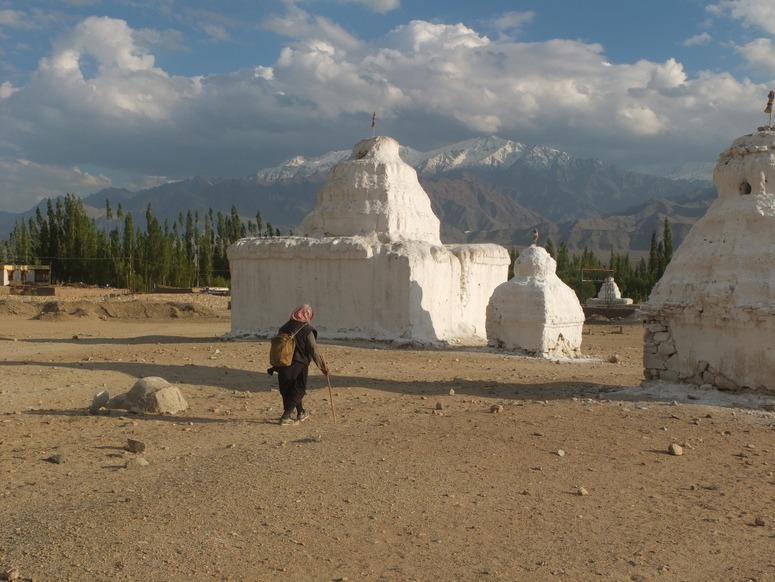 Having wondered for some time whether the design and siting of the pyramids at Giza was conceived as a ‘stylization’ of sand dunes on the boundary between the Red Land (desert) and the Black Land (farmed land), I timidly kept the idea to myself until Charles Jencks put forward the same idea. Now I wonder if the largest stupa field in Ladakh (above, at Shey) was conceived as a stylization of a mountain range. The stupas have this appearance but there are many considerations:
Having wondered for some time whether the design and siting of the pyramids at Giza was conceived as a ‘stylization’ of sand dunes on the boundary between the Red Land (desert) and the Black Land (farmed land), I timidly kept the idea to myself until Charles Jencks put forward the same idea. Now I wonder if the largest stupa field in Ladakh (above, at Shey) was conceived as a stylization of a mountain range. The stupas have this appearance but there are many considerations:
- Hindu gods are associated with mountains
- Buddhism does not have creator gods but draws much from Hindus ideas
- Stupas are symbols of the Buddha’s presence
- Nirvana is represented in Buddhist art as being in a mountainous region
- Mt Kailash is sacred to Hindus and Buddhists
An interesting aspect of Ladakh is that it has no tradition of making ‘pleasure gardens’ but the whole country appears to have been conceived as a garden.

The stupa is considered architecture rather than landscape and symbolises the sitting Buddha. [ http://buddhistsymbols.info/stupa/ ] Can you identify what type of stupas are in your photograph?
Your link is to a good summary of stupa sybmolism but I think it contains a strong element of post-rationalisation: the design of stupas (like Sanchi) is older than any records of their symbolism.
Stupas are of course architectural structures but my belief is that their careful location in landscapes makes them classic examples of ‘landscape architecture’ in its original sense of architecture which was very closely related to landscape settings.
Yes, the presence of Stupa’s in Hindu sites is interesting. The link through to Chinese and Japanese architecture even more fascinating still! [ http://www.historyworld.net/wrldhis/PlainTextHistories.asp?historyid=ab96 ] A good example of architecture evolving from landscape!